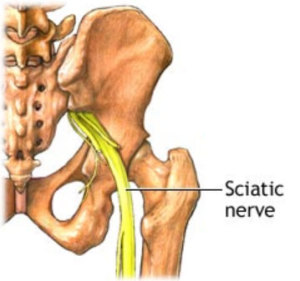For many people, joint pain and muscle stiffness are a daily nuisance. Joints in the hands, wrists and feet get stiff and sometimes painful to move. Sometimes it’s hard to get up out of a chair or button a shirt. Or you might have a nagging lower back ache, or that shoulder that just won’t relax. The good news is that relief may come from something you may have never considered–massage.
Tag: sciatica
Top Four Reasons You Have Lower Back Pain
About 2% to 10% of people who experience lower back pain develop chronic low back pain, which affects daily living for at least 3 months. The causes are many since the spine and muscles in the lower back are involved in most of the movement we do on a daily basis. Here are a few of the most common ones:
1. The way you sit. Poor sitting posture can result in lower back injuries and contribute to the poor positioning of other parts of the body, such as the arms, wrists, and legs. You can make some small changes that can have a big impact on your posture and in turn reduce chronic pain in your arms, fingers, lower back and legs.
2. The way you sleep. Many shoulder, upper and lower back issues are caused, or exacerbated, by incorrect sleep posture. Whether it’s your pillow, the position of your arms or the firmness or softness of your mattress, changes in sleep posture are easy to do and can have a huge impact both on the quality of sleep you get, and how you feel when you wake up. Continue reading “Top Four Reasons You Have Lower Back Pain”
Could It Be Sciatica?
 Your sciatic nerve is the longest and widest in the human body. It starts in your lower back near the base of your spine and branches run through your buttocks and down each leg. This important nerve supplies almost all the skin of the leg, muscles of the back of your thigh and leg and foot.
Your sciatic nerve is the longest and widest in the human body. It starts in your lower back near the base of your spine and branches run through your buttocks and down each leg. This important nerve supplies almost all the skin of the leg, muscles of the back of your thigh and leg and foot.
As it weaves it’s way through your lower anatomy, it actually passes just under your piriformis muscle and through an opening in your pelvis. When it reaches the leg, it travels down the back of your leg, behind the adductor magnus muscle and ends at your foot.
What is Deep Tissue Massage, Really?
What is deep tissue and how is it beneficial?
Many people think “deep tissue” means “huge amounts of pressure” and “it should hurt a lot”. The fact is, deep tissue really means neither of those. True deep tissue work is a type of massage therapy that focuses on realigning and invigorating layers of muscle and connective tissue that are deeper inside the body. With deep tissue, the therapist can use specialized techniques to reach muscles positioned “under” or “behind” surface muscles.
Deep tissue is especially helpful for chronic aches and pains and issues like a stiff neck and/or shoulders, sore upper back, low back pain tight leg muscles, and more.
According to the August 2005 issue of Consumer Reports magazine, 34,000 people ranked deep tissue massage more effective in relieving osteoarthritis pain than physical therapy, exercise, prescription medications, chiropractic, acupuncture, diet, glucosamine and over-the-counter drugs.

